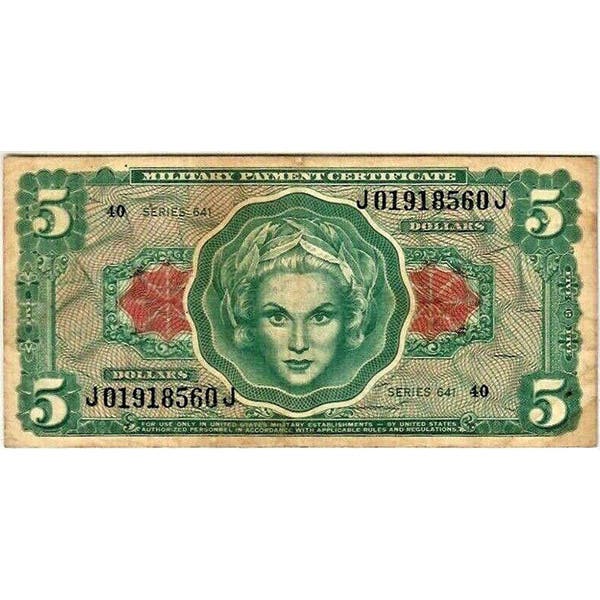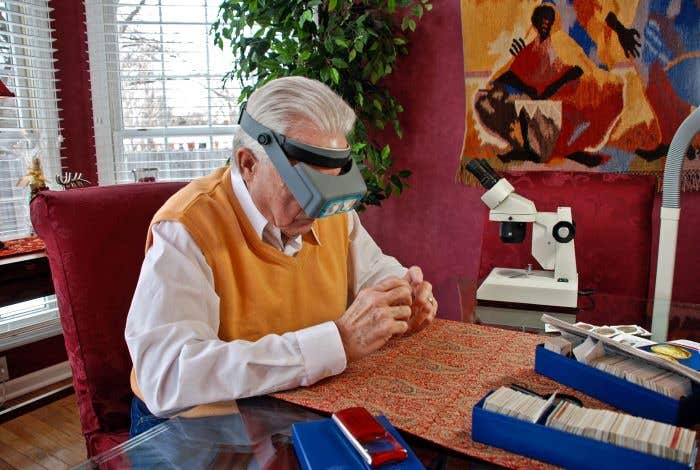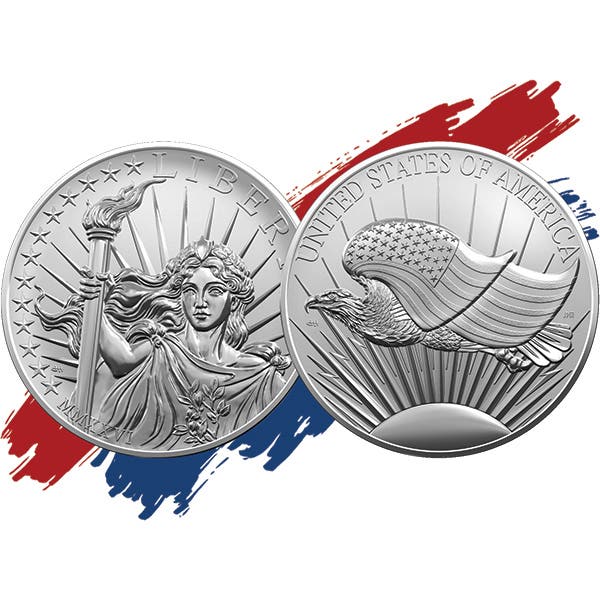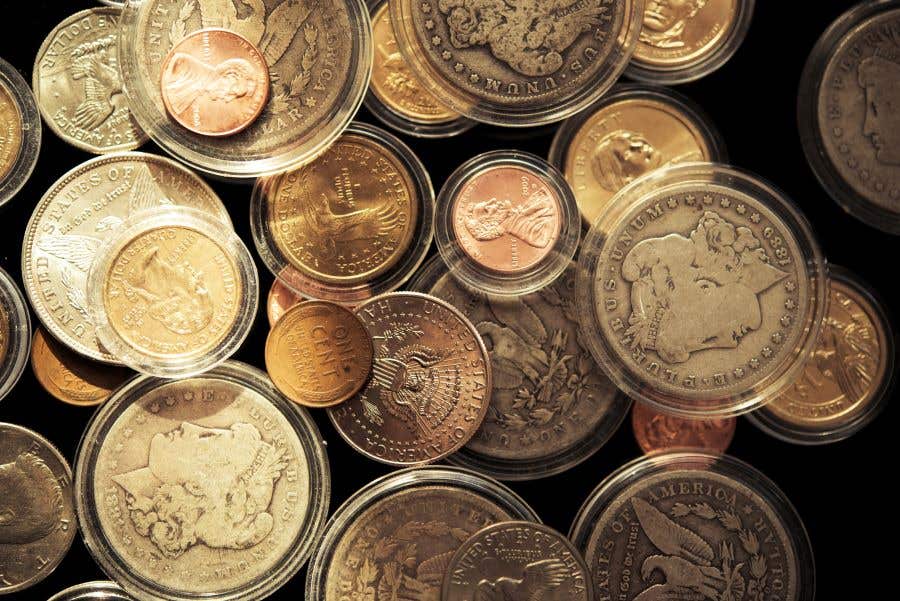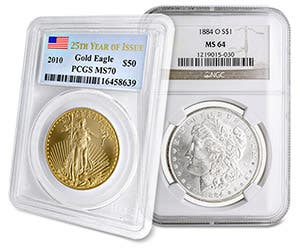This week’s letters (10/11/11)
The Langbord case is one of the most painful that I have seen. The government agencies tricked the Langbords into sending these coins in to be supposedly authenticated when their true intent was confiscation and seizure.
Real theft was government seizing Langbord coins
The Langbord case is one of the most painful that I have seen. The government agencies tricked the Langbords into sending these coins in to be supposedly authenticated when their true intent was confiscation and seizure.
According to the evidence produced thus far, the books were not short any double eagles corresponding to the amount of 1933s that have come to light. The books balanced. They were exchanged, face for face. Where is the theft? The theft appears many decades later when the coins were seized and the owners were not compensated for their loss, at least in my opinion. And as a previous reader noted, the 1933 eagles are not illegal to own. What is wrong with this picture?
Brian Raines
Mount Vernon, Ohio
Gold bars used to buy townhouse in Vietnam
I have been visiting Vietnam since 1989. After a few years of paying hotel bills, my wife and I decided to buy a townhouse. Once we found the one we liked, we agreed to buy it.
I transferred the cash (there were no mortgages at that time) and went to settlement with 202 1 ounce gold bars (37.5 grams is the Vietnamese ounce). The papers were signed, the seller counted the bars, and then the house was ours, and still is today.
To have paid in Vietnamese dong, I would have had to have a small truck bring stacks of paper money, so the Vietnamese price their house sales in ounces of gold.
Howard A. Daniel
Address withheld
Still a thrill to find silver coins in circulation
I enjoyed the recent article in the Sept. 6 issue by Ginger Rapsus. It reminded me of when I started collecting in the early ‘70s. Going with my friends to the Post Office where a nice old lady sold us rolls of cents, nickels and dimes. That was a time when we found steel cents, Buffalo and war nickels, Mercury dimes and even several 1909 and 1909-VDB cents.
However, I still find war nickels and a few silver Roosevelts today. My most recent find was at a Coinstar machine. I was dumping some cents and the machine jammed. A store worker came and opened the front of the machine and cleared several coins, most of which fell on the ground. While she was fixing the machine, I picked up the coins that fell and among them was a 1957 Roosevelt dime (possibly the culprit, which I kept for my troubles).
After all these years, I’m still finding silver. It takes me back and it’s still a thrill.
Chris Costello
ANA should focus less on show, more on awareness
Something is definitely wrong with the American Numismatic Association. Out of approximately 32,000 members, only 5,850 votes were tabulated in the recent election.
It seems that the ANA does not know how to promote such an event, yet it spends a fortune on the Chicago World’s Fair of Money. Greed – wow.
Harold A. Rodriguez
Anaheim, Calif.
Rapsus article reminds reader of own experience
I really enjoyed the article Ginger Rapsus wrote in the Sept. 6 Numismatic News.
She reminds me of how I started collecting back in 1958. Back then, I could find numerous odd pieces, but over the decades, they have slowly vanished.
Please publish more articles of hers or others. They’re great.
Bob Atwater
Conway, S.C.
More time, study needed for beautiful coin designs
Most collectors would agree that the early 20th century coin designs were the most artistic. Why? The coin designer was willing to study the subject matter a bit longer and carefully place the elements of the design properly on the coin.
Simply put, he took the time to create a masterpiece.
Compare the latest coin designs with the earlier ones such as Morgan dollars, Peace dollars, Indian Head cents, Walking Liberty halves, etc. These coins are truly works of art and will always be in demand by collectors.
Rushing a coin design will only produce less than average results and more undesirable coins in the future.
Let’s begin by studying better and spending more time in perfecting our future coinage.
Mark E. Switzer
Bellevue, Wash.
Mexican gold coin at flea market turns out to be fake
I have been collecting coins for more than 50 years, so I’m pretty familiar with everyday coins. I was at a flea market and a person was selling a 50-peso Mexican gold piece.
The seller and I started talking about coins and, to make a long story short, he admitted it was a fake coin. The coin itself looked like the real thing. The only odd part about it was that it had two dates: 1821–1947. I bought the coin for $15 just to play around with it.
So, all new collectors, beware of all gold pieces from Mexico. I can’t get over how this coin looks so real.
Pete Perez
San Antonio, Texas
Double eagle decision means no more will surface
After reading about the decision in the 1933 double eagle case, I would like to say it has closed the door on any more of these coins ever coming up. I don’t think anybody would come forward and lose their coins.
Maybe there are hundreds of thousands of them, we will never know.
I hope the government does not destroy them.
Robert W. McLean
Quincy, Mass.
Good cents drowned out by new ‘worthless pennies’
Well, the Mint is doing it again: flooding the cent supply with a bunch of worthless pennies.
Bump up the production of nice coins and cut the garbage. With all the new pennies that are out now, it makes it hard to search rolls for good cents.
Bob Atwater
Conway, S.C.
Correction of word usage in NN went too far
I rarely respond to an individual’s letter, but the one entitled, “People are not awarded, they receive awards” by Eric von Klinger was something I just couldn’t let slide. It is one thing to correct grammatical errors or incorrect word usage, but another to spew contempt for public school teachers and the copy editors of Numismatic News.
Everybody makes mistakes, and I’m sure the writer of this letter wouldn’t want to be treated as harshly when he makes one, which brings me to my second point.
Mr. von Klinger uses the word “illiterate” rather liberally when describing public school teachers and the copy editors of this publication. If any of these people were illiterate as he says they are, they wouldn’t have made it past their first interview.
Even the most highly educated person can make errors in word usage. It is acceptable to offer correction, but the kind of vitriol expressed by Mr. von Klinger went over the line.
William Bejda
Numismatist and public school teacher
Cicero, Ill.
Unclear grading terms used to defraud non-collectors
The system we use to grade our coins legalizes fraud. How would a non-collector know that words like “Good” and “Very Fine” are describing the condition of coins at the bottom end of a 1-70 scale?
One company is selling Columbian Exposition half dollars in Very Fine condition for $29.95 plus $6.95 shipping and handling. This translates into $36.90 for a coin that is worth $12 and has no numismatic value in that grade.
Their sales pitch is that 128 years ago, a similar coin sold for the equivalent of $10,000 and very few remain in Very Fine condition.
Charles Lindsay
Washington, Pa.
If you don’t like the coin, sell it to someone
I am a hobbyist, not a dealer. Recently I acquired through an online auction site, a modern U.S. gold coin with Mint box and papers. The coin was advertised by the seller as damaged, having a scratch and nick on the reverse near the rim at about the 2 o’clock position. The uncirculated version sells for about six times that of the proof. The seller offered the coin at a significantly reduced price and accepted my offer for even less.
Upon receiving the coin, I noticed the obverse and reverse seemed very dull, not the bright yellow color I’d expect from a Mint-issued modern gold piece. It did not look counterfeit, just dull. Environmental damage, I figured. Perhaps it was placed in a bezel and exposed to elements for a time. Still, to me, I had bought champagne on a beer budget.
Last week I attended a small local coin show as a seller. I offered the piece at half of the price in the price guide. Very few people stopped to look at it. One visitor, who I believe to be knowledgeable in the hobby, examined the coin for several minutes. He shared his unsolicited opinion with me: that the coin might be an altered proof. If he was right, it meant the alterer knew how much more valuable the uncirculated version is and “sanded” down the surfaces, hoping to remove the mirror-like proof finish.
Cutting to the chase, about an hour later, another visitor asked to examine the coin, which he and another man did for several minutes. I told him the coin had issues, and was priced accordingly. He made me an offer to buy the coin, which I accepted.
This week, I ran into the host of the show, who informed me that the buyer of the gold piece was not happy and wanted to talk to me. I assume he wants his money back, which has since gone to groceries, gas and other essentials.
As a buyer, I accepted the coin as legitimate and sold it in the same spirit. My feeling is that if the new owner is unhappy with his purchase, he is free to find a new buyer.
Your opinion is welcome.
Don Wechter
Address withheld
Why isn’t doubled D cent listed in price guides?
I have a 1944-D cent with the D doubled. I have had it looked at by a certified grader and was told it is a doubled D. Why is this coin never listed in the numismatic price guide?
John Sittig
Address withheld
Editor’s note: This falls into the variety and error field. Generally speaking, varieties that are widely recognized and/or have significant value like the 1955 doubled die cent are listed in standard price guides. Those that don’t make the cut are dealt with by specialty clubs and their publications. The 1944 Denver cent that has the “D” punched over an “S” is considered a signficant error and is listed. Because mintmarks were placed on dies by hand until the 1990s, there is a wide variation in how they appear and most are simply curiosities with no added value.




